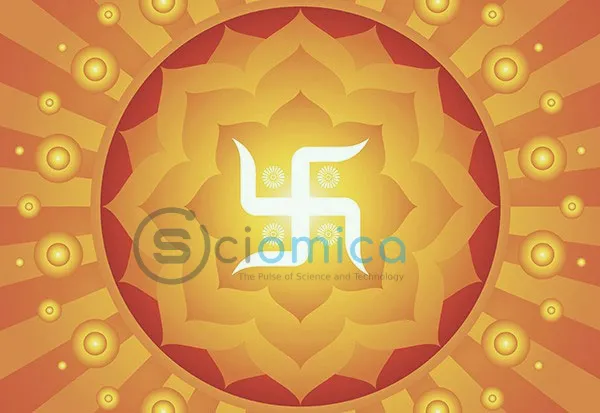Mysterious Events in Science That Shook the World Throughout history, there have been many strange occurrences that defy human understanding and surpass scientific explanation.
Top 6 Unsolved Mysteries in History
1. The Oddest Knife in the World
This knife was forged by a mad Italian blacksmith, who created the handle from the bone of his deceased wife’s right arm, the blade from his son’s rib bones, and the grip from his own shin bone. He gifted it to his creditor. Three days later, the creditor went insane and burned his entire family. Subsequent owners of this knife also went mad. It appears to be cursed, as not only the possessors but their entire families faced tragic ends.
2. Accurately Predicting One’s Own Death
Cardinal John Wu Cheng-Chung accurately predicted the date of his own death. He passed away at 6:00 AM on September 23, 2002, at Queen Mary Hospital, at the age of 77 due to myeloma. Father Chen Zi’en, who officiated the mass, revealed that the Cardinal had told colleagues he would die sometime between May 23 and July 23, leading to his eventual passing on September 23.
3. The Most Magical Number in the World
The most magical number is 142857. When you multiply it: 142857 x 1 = 142857; 142857 x 2 = 285714; 142857 x 3 = 428571; 142857 x 4 = 571428; 142857 x 5 = 714285; 142857 x 6 = 857142. The same digits appear rearranged. What happens when you multiply it by 7?
4. The Mysterious Solar Angle
This photo shows a large rock on the Birman Sea (Myanmar). It appears only once a year when the sun is at a unique angle, requiring specific lighting conditions to be visible. Tilt your head left, and you will see the wonder of this image. The exact solar angle that results in this phenomenon remains a mystery.
5. The Wailing Wall
The Wailing Wall in Jerusalem “weeping” signals a potential end of the world? In July 2002, a strange phenomenon occurred when a stream of water flowed from a stone on the famous Wailing Wall, resembling tears. The water covered an area of about 10cm x 40cm on the wall.
These drops flowed from the area designated for men’s pilgrimage, slightly to the right of the central stone, close to the boundary for women’s pilgrimage. Water continuously dripped from the wall.
While some say the water flow could be due to a previous drainage installation, many believe it is odd that the water does not evaporate or spread, only forming droplets resembling tears, making it a mystery. Certain Jewish mystical sects even refer to prophecies that suggest when the Wailing Wall weeps, it is an omen of the end times.
6. The Swastika Symbol and 12,000 Years of History
The swastika is a symbol associated with one of the most hated men on Earth, representing the massacre of millions and one of the most devastating wars. However, Adolf Hitler was not the first to use this symbol.
In fact, it was a symbol of power long before Hitler, traversing many cultures and continents.

Today, it is still visible in many places, on temples, buses, taxis, and book covers across India and other Asian countries.
It was also used in ancient Greece, found in relics from the ancient city of Troy, existing from 4,000 years ago. Artifacts also indicate that the ancient Druids and Celts used this symbol.
Nordic tribes, including early Catholics, utilized the swastika as a symbol. For instance, the Teutonic Knights, a medieval German military order that became a purely religious Catholic order, employed it.
But why is this symbol so important, and why did Hitler decide to adopt it as a symbol?
The term “swastika” is derived from the Sanskrit word (“svastika”), meaning “it”, “happiness”, “as desired”, and “good luck”. However, it goes by different names in various cultures, like “Vạn” in China, “Manji” in Japan, “fylfot” in England, “Hakenkreuz” in Germany, and “tetraskelion” or “tetragammadion” in Greece.
In 1979, PR Sarkar, a Sanskrit scholar, revealed the deeper meaning of the word as “eternal glory” (permanent victory).
The earliest swastika symbol discovered was at Mezine, Ukraine, engraved on a mammoth ivory statue, astonishingly dating back to 12,000 years ago. Additionally, one of the earliest known cultures to use this symbol was the Neolithic Vinca culture in Southern Europe, now Serbia, Croatia, Bosnia and Herzegovina – appearing approximately 8,000 years ago.
In Buddhism, the swastika is a symbol of luck, prosperity, and eternity. It is directly related to the Buddha and can be found on statues, carved into the soles and hearts of Buddha figures. It is said to contain the Buddha’s wisdom.
On the walls of Catholic catacombs in Rome, this symbol appears alongside the phrase “zotiko zotiko”, meaning “life of life”. It can also be found in the window panes of the mysterious rock churches of Lalibela in Ethiopia and in churches worldwide.
In Norse mythology, the God Odin appears as a swastika spinning through every realm. In North America, this symbol was used by the Navajo people.
In ancient Greece, Pythagoras referred to the swastika as “tetraktys”, a symbol connecting heaven and earth, with one arm pointing to the sky and the other to the ground. It was also utilized by the Phoenicians as a symbol of the Sun, regarded as a sacred symbol used by nuns.
How and why have so many countries and cultures, over the ages, used such a similar symbol with seemingly consistent meaning? Ironically, a symbol once representing life and eternity, holding sacred value for thousands of years, has become a symbol of hate.











